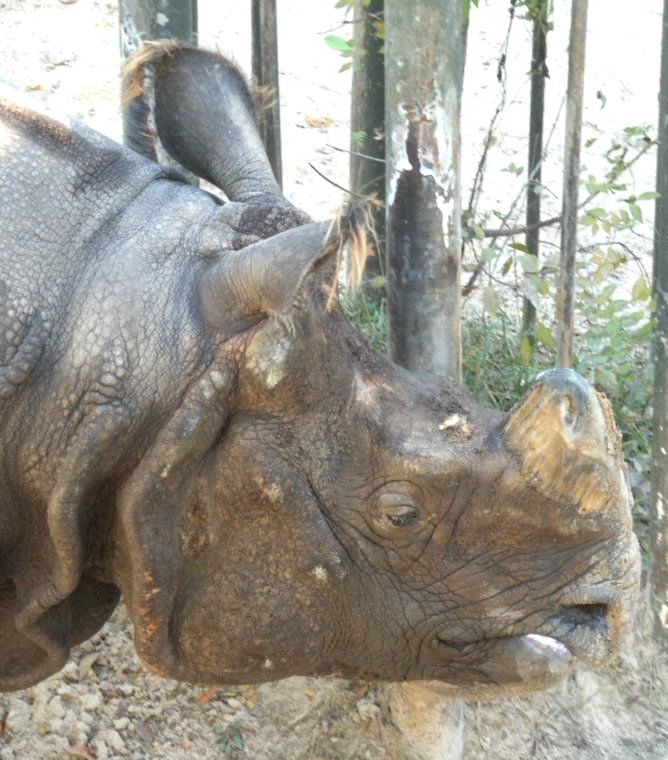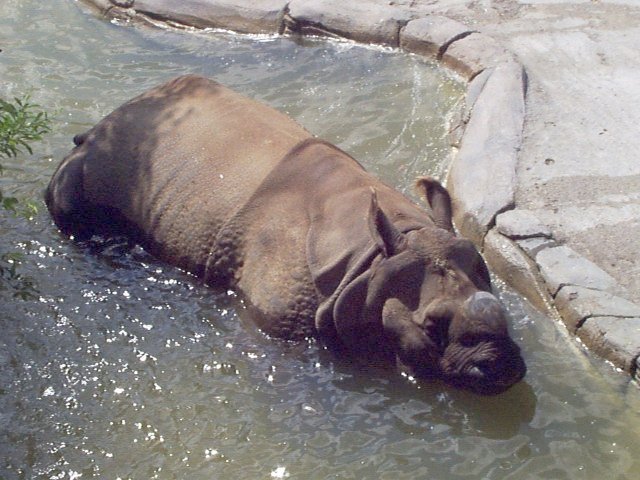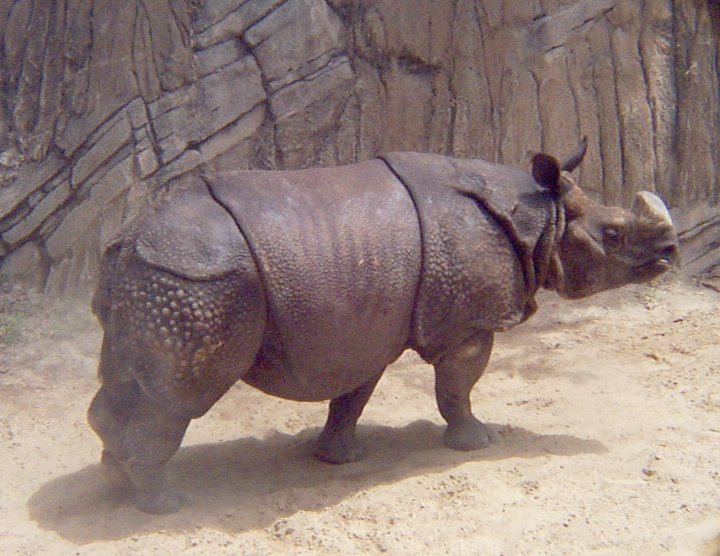
Indian rhinos on average are about 3-7 feet tall and 7-14 feet long. They usually weigh about 3,300-4,400 pounds. At first sight one might get frightened but they are peaceful animals. They are three hoofed animals. Their skin is dark gray in color and it falls into distinct folds at the joints of the shoulders. The skin gives an appearance of protective armor. It has one single horn that is stubby and blunt. This horn is usually ragged in older animals. The horn is made out of hair-like fibers called keratin that are clumped together above a bony knob on top of the skull.
They are very territorial and usually live in isolation even from their own kind. The only exception is that they do share bathing pools, wallows, and dug heaps. They make their feeding and sleeping areas their own. If any other animal tries to enter their territory then the Indian rhino will charge after it to make it go away. In the morning the rhinos feed in open areas, they gradually move towards shade as the sun rises. They spend most of the day wallowing together. Towards the evening they move back to feeding areas and graze until it is time for them to rest. Females with rhino calves move to places where tall grass grows to protect young from predators. The bigger rhinos are too large to fear predators so they usually lie where they are feeding.
- Rhinos have a very keen sense of smell.
- Rhinos can run speeds up to 28 miles per hour for short distances.
- Rhinos wallow in the mud in order to protect themselves from biting insects and sunburn.
- Rhinos grunt and snort to communicate with each other. Female rhinos whistle to get the male rhino's attention.
 .
. The male rhino reaches sexual maturity in 7-9 years. The female rhino reaches sexual maturity in 3 years. The female rhino is ready to mate for twenty-four hours every 5-8 weeks. She attracts the male rhino by spraying her urine around her territory. She also makes gentle whistling sounds to call his attention. The females stay pregnant for 462-489 days. The female looks for dense cover when it is time to give birth to the calf. Rhinos are mammals that only give birth to one calf.
When I visited the zoo, the rhino in the zoo spent most of her time swinging her head from left to right against a metal gate that was her only barrier from the other types of rhinos. She would then back away from the gate and make a loud grunting noise. From this observation I concluded that she was just guarding her territory. She spent the rest of her time wallowing and eating leaves. She also urinated in different spots around her territory, but she only excreted feces in one area of her territory.

Sylver M. Warren
Please send e-mail to sylver822@yahoo.com
Sources and Links:
- Wild Life Fact On File
- http://www.cnn.com/2002/TECH/
- http://www.cattales.org/rhino.html
- Grzimek's Animal Life Encyclopedia,
- http://www.whozoo.org/students/
science/08/14/wwf.rhinos/?related
Mammals IV. Vol.13.
cjames/asianrhi.htm